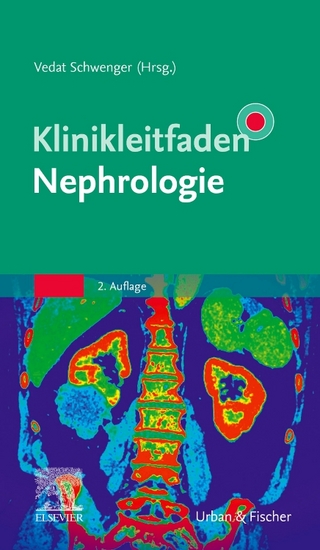
Neural Control of Renal Function
Seiten
2010
Morgan & Claypool Publishers (Verlag)
978-1-61504-231-9 (ISBN)
Morgan & Claypool Publishers (Verlag)
978-1-61504-231-9 (ISBN)
- Titel z.Zt. nicht lieferbar
- Versandkostenfrei innerhalb Deutschlands
- Auch auf Rechnung
- Verfügbarkeit in der Filiale vor Ort prüfen
- Artikel merken
The kidney is innervated with efferent sympathetic nerve fibers reaching the renal vasculature, the tubules, the juxtaglomerular granular cells, and the renal pelvic wall. The renal sensory nerves are mainly found in the renal pelvic wall. Increases in efferent renal sympathetic nerve activity reduce renal blood flow and urinary sodium excretion by activation of ?1-adrenoceptors and increase renin secretion rate by activation of ?1-adrenoceptors. In response to normal physiological stimulation, changes in efferent renal sympathetic nerve activity contribute importantly to homeostatic regulation of sodium and water balance. The renal mechanosensory nerves are activated by stretch of the renal pelvic tissue produced by increases in renal pelvic pressure of a magnitude that may occur during increased urine flow rate. Activation of the sensory nerves elicits an inhibitory renorenal reflex response consisting of decreases in efferent renal sympathetic nerve activity leading to natriuresis. Increasing efferent sympathetic nerve activity increases afferent renal nerve activity which, in turn, decreases efferent renal sympathetic nerve activity by activation of the renorenal reflexes. Thus, activation of the afferent renal nerves buffers changes in efferent renal sympathetic nerve activity in the overall goal of maintaining sodium balance. In pathological conditions of sodium retention, impairment of the inhibitory renorenal reflexes contributes to an inappropriately increased efferent renal sympathetic nerve activity in the presence of sodium retention. In states of renal disease or injury, there is a shift from inhibitory to excitatory reflexes originating in the kidney. Studies in essential hypertensive patients have shown that renal denervation results in long-term reduction in arterial pressure, suggesting an important role for the efferent and afferent renal nerves in hypertension.
Part I: Efferent Renal Sympathetic Nerves
Introduction
Neuroanatomy
Neural Control of Renal Hemodynamics
Neural Control of Renal Tubular Function
Neural Control of Renin Secretion Rate
Part II: Afferent Renal Sensory Nerves
Introduction
Neuroanatomy
Renorenal Reflexes
Mechanisms Involved in the Activation of Afferent Renal Sensory Nerves
Part III: Pathophysiological States
Efferent Renal Sympathetic Nerves
Afferent Renal Sensory Nerves
Conclusions
References
| Erscheint lt. Verlag | 8.7.2011 |
|---|---|
| Reihe/Serie | Colloquium Series on Integrated Systems Physiology |
| Verlagsort | San Rafael |
| Sprache | englisch |
| Maße | 187 x 235 mm |
| Themenwelt | Medizinische Fachgebiete ► Innere Medizin ► Nephrologie |
| Studium ► 1. Studienabschnitt (Vorklinik) ► Physiologie | |
| ISBN-10 | 1-61504-231-8 / 1615042318 |
| ISBN-13 | 978-1-61504-231-9 / 9781615042319 |
| Zustand | Neuware |
| Haben Sie eine Frage zum Produkt? |
Mehr entdecken
aus dem Bereich
aus dem Bereich


